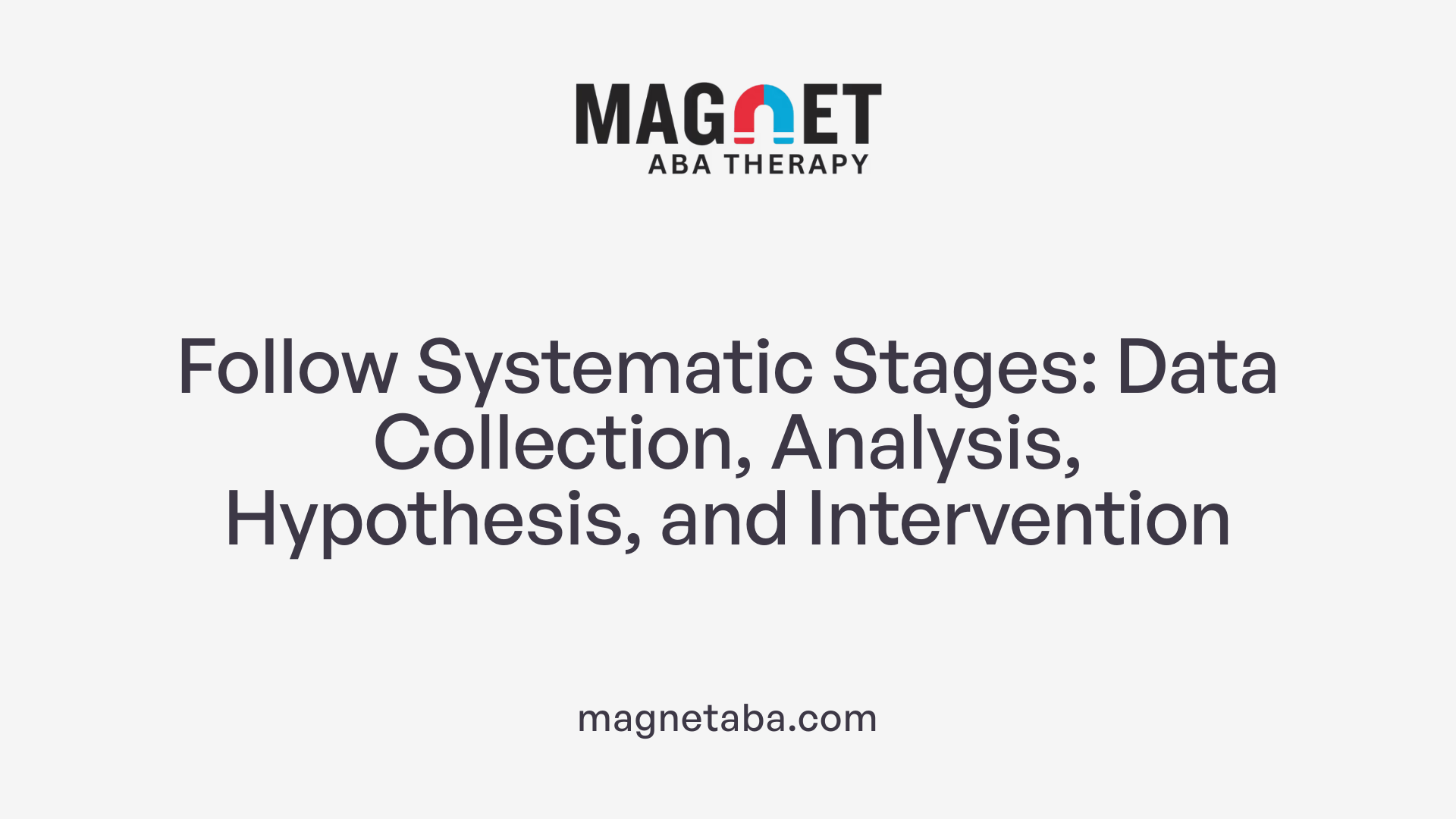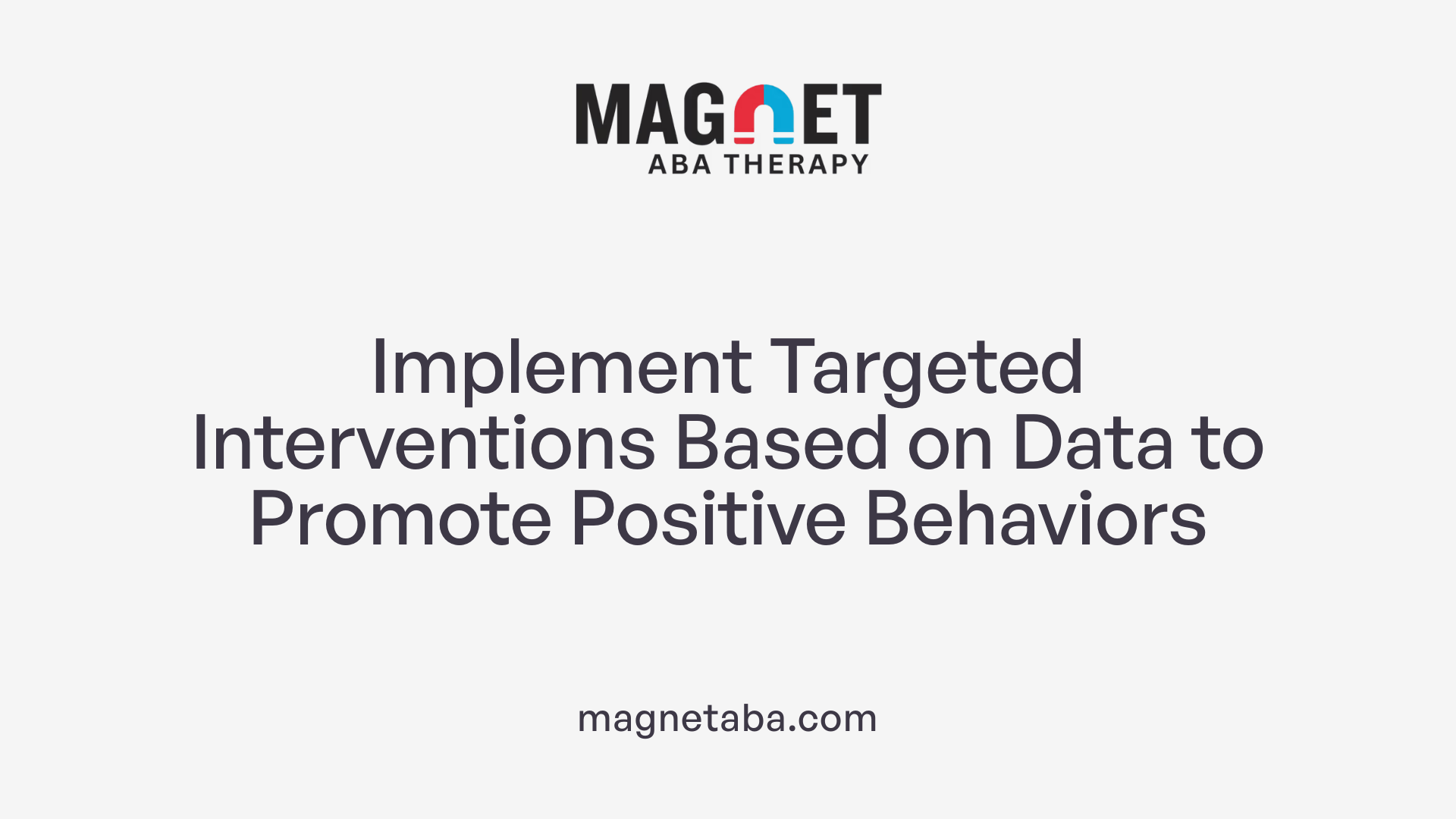A comprehensive overview of what happens during an FBA
A functional behavioral assessment (FBA) is a systematic approach used by trained professionals to identify the underlying causes of challenging behaviors in children and individuals with disabilities. This assessment is critical for developing effective interventions that promote positive behaviors and improve learning environments. Understanding what an FBA involves, why it is important, and how it is conducted can help educators, parents, and caregivers prepare for and participate in this vital process.
Defining and Preparing for an FBA

What does a functional behavior assessment involve?
A functional behavior assessment (FBA) is a systematic process that helps professionals understand why a student behaves in certain challenging ways. It involves gathering both indirect data, such as interviews and checklists, and direct data through observations like ABC (Antecedent-Behavior-Consequence) reports. The team reviews relevant records and observes behavior in natural settings to identify patterns and triggers.
During the assessment, the team analyzes all collected data to determine the function of the behavior. Common functions include gaining attention, escaping demands, sensory stimulation, or obtaining tangible rewards. Based on this analysis, they develop a hypothesis about why the behavior occurs. This leads to the creation of a Positive Behavior Support Plan (PBSP) that outlines strategies to change the environment, teach replacement skills, and prevent future occurrences of the behavior.
The process is not a one-time event; it requires ongoing monitoring, data collection, and adjustment of interventions to ensure they are effective. An FBA helps tailor support to the individual student, aiming to promote positive behaviors and learning outcomes.
Role of a trained assessment team
A successful FBA is conducted by a team of trained professionals, which often includes a school psychologist, behavior specialist, or behavior analyst. Teachers, staff, families, and the student’s support network are integral parts of this team. Their coordinated efforts ensure comprehensive data collection and accurate interpretation of behavior.
Team members are responsible for defining the target behavior clearly and precisely. They develop methods for observing the behavior across different settings and times. Their combined expertise allows them to form a well-supported hypothesis about behavioral functions and design effective intervention plans.
Initial steps before the assessment
Before beginning the FBA, the team must first identify and clearly define the target behavior. This involves creating a specific, observable, and measurable description, such as "Mary screams and hits" or "Joe calls other children names."
They also gather background information, including academic, medical, and behavioral histories, as well as insights from parents and staff about when and where behaviors occur most frequently. Securing parental consent is a key step before any data collection or observation begins.
The team then plans data collection methods, which include arranging observations in natural routines, reviewing records, and conducting interviews. Establishing a timeline and roles ensures a coordinated approach to the assessment.
Importance of defining target behaviors
Defining the behavior precisely is foundational for an effective FBA. A well-written behavior definition provides clarity, guiding data collection and analysis. It also ensures everyone involved understands what specific behaviors need to be addressed.
Good definitions describe what the behavior looks like, including context, duration, and setting. For example, instead of vague terms like "disrespectful," a clear definition would be "Mary screams and hits when asked to complete math work."
Accurate and detailed behavior definitions help identify patterns and triggers, making intervention strategies more targeted and effective. Overall, it provides the clarity needed for successful behavioral assessment and subsequent planning.
The Steps of Conducting an FBA

What are the main steps involved in a functional behavior assessment?
A functional behavior assessment (FBA) is a systematic process aimed at understanding why a student exhibits challenging behaviors. It comprises several stages, starting with thorough data collection. The team gathers information through indirect methods like interviews with teachers, parents, and caregivers, using tools such as questionnaires and rating scales. Additionally, direct observations are conducted in natural settings, where behaviors are documented using ABC (Antecedent-Behavior-Consequence) charts or structured observation forms.
Once sufficient data has been collected, the next step is analyzing it to find patterns. This involves identifying common triggers, environmental factors, time periods, and social contexts associated with the behavior. The team looks for trends in antecedents (what happens before the behavior) and consequences (what happens afterward), to determine what might be maintaining the behavior.
Based on this analysis, the team formulates a hypothesis about the behavior’s function. This could be to seek attention, avoid tasks or situations, obtain tangible rewards, or for sensory stimulation. Understanding the purpose of the behavior guides the development of intervention strategies.
The final phases involve creating and implementing a behavior intervention plan (BIP). This plan includes strategies that modify environmental triggers and consequences, teaches alternative and more appropriate behaviors, and reinforces positive actions. The BIP aims to reduce undesirable behaviors while promoting skills that help the student succeed academically and socially.
Ongoing monitoring is crucial. The team continuously collects data to evaluate the effectiveness of the interventions. Based on this ongoing assessment, adjustments are made to ensure lasting improvements. This cyclical process helps tailor supports to the student's evolving needs, ensuring that the behavior management strategies are effective and sustainable.
Techniques Used During an FBA
What techniques are used during a functional behavior assessment?
Conducting an effective FBA relies on several established techniques that help identify the causes and functions of a child's challenging behavior. These methods include both indirect and direct assessment strategies, as well as experimental approaches, each providing valuable insights.
The first group involves indirect assessments. These are less invasive and quicker to administer and involve gathering information from people who interact with the individual regularly. Common tools include interviews, questionnaires, rating scales, and record reviews. For example, teachers, parents, and caregivers provide insights into when and where behaviors happen most often, and what seems to trigger or reinforce them.
Direct observation tools are also essential. These techniques involve systematically watching and recording behaviors in the natural environment. Observers often use ABC recordings, which track antecedents (triggers), behaviors, and consequences. Time charts or event counters help quantify how often behaviors occur, their duration, and the context in which they happen.
An advanced technique incorporated within FBA is the experimental functional analysis. This method involves manipulating environmental variables to observe their effect on the behavior. For instance, by systematically providing or withholding attention, demands, or tangible rewards in controlled settings, professionals can determine which factors maintain the behavior. This approach offers concrete evidence for the function behind behaviors, such as escaping a demand or seeking social attention.
Additionally, tools like functional analysis screening or functional communication training are used to test specific hypotheses and develop alternative communication strategies for the individual.
In summary, a combination of interviews, observations, and experimental manipulations forms a comprehensive toolkit that enables professionals to pinpoint why a behavior occurs. These insights guide the development of customized, effective intervention strategies to support positive behavior change.
Who Conducts the FBA and Their Qualifications

Who is qualified to conduct a functional behavior assessment?
An FBA must be carried out by professionals who possess the necessary training, knowledge, and skills to accurately gather and analyze behavioral data. Typically, qualified individuals include school psychologists, behavior analysts, special education teachers, school counselors, and other trained personnel in the educational setting.
These professionals need to be familiar with various assessment methods such as observations, interviews, and record reviews, along with a clear understanding of how to interpret data on antecedents, behaviors, and consequences.
Legally, certifications and recognitions such as those outlined in Minn. R. 9544.0020 and 9544.0040 specify that the person conducting the FBA must be deemed qualified to develop effective behavioral interventions. This ensures ethical standards are maintained and that the assessment is valid and reliable.
Training specific to FBA procedures often includes understanding biological, psychological, and environmental factors influencing behavior. Such training prepares the assessor to identify the function of behaviors—whether they are attention-seeking, escape-driven, or sensory—and to develop appropriate intervention plans.
Before starting an FBA, parental or student consent is required, safeguarding privacy and rights. The process typically needs to be completed within a set timeframe—usually 30 school days—to facilitate timely intervention.
In summary, an FBA should be conducted by a professional with specialized knowledge, legal qualification, and ethical responsibility to ensure the assessment accurately reflects the child's behaviors and supports meaningful intervention.
Preparing for and Participating in an FBA

What parents and teachers should do
Preparing for a Functional Behavioral Assessment (FBA) involves gathering detailed information about the student's behavior. Teachers should keep clear, specific records of when and where challenging behaviors occur, noting the context, triggers, and consequences. Parents can contribute valuable insights from home, including routines, recent changes, and behaviors that may not surface during school hours.
It is important for all involved to maintain open communication, share observations, and participate actively throughout the process. Teachers can prepare by reviewing the student’s records and behavior logs, while parents can prepare by observing and documenting behaviors at home.
Importance of observations and input
Observations are the foundation of an effective FBA. Direct monitoring in various settings helps identify patterns, triggers, and the function of behaviors. Both teacher and parent input are vital, as they provide a comprehensive view of the child’s behavior across environments.
Using structured tools like ABC charts (Antecedents, Behavior, Consequences) can help organize observations. Accurate data collection is essential; it allows the team to understand why behaviors occur and develop appropriate interventions.
Collaborative planning
Successful FBAs rely on a team effort. Teachers, parents, school psychologists, and behavior specialists must collaborate closely to interpret data and decide on next steps. Involving parents from the start ensures that the intervention strategies align with the child's home and school routines.
Planning meetings should be scheduled to review collected data, formulate hypotheses about the behavior's function, and develop a behavior intervention plan (BIP). Regular communication during implementation helps adjust strategies promptly, ensuring that interventions are effective and supportive of the child's needs.
How to prepare for a functional behavior assessment
To prepare effectively, gather all relevant behavioral data, review school and medical records, and reflect on recent changes in the child's environment or routine. Preparing questions or specific observations to discuss during team meetings can also help clarify the behavior’s context.
Participating actively by providing detailed, honest input and remaining open to recommendations will enhance the FBA process. This collaborative approach ensures an accurate understanding of the behavior and supports the development of successful strategies to promote positive change.
Using the Results of an FBA to Support Behavioral Change
 Once an FBA concludes, the results serve as a foundation for creating targeted interventions. The primary use of FBA data is to develop a behavior intervention plan (BIP) tailored to the child's specific needs. This plan incorporates strategies such as functional communication training, where children learn alternative ways to express their needs, and positive reinforcement, which encourages desirable behaviors.
Once an FBA concludes, the results serve as a foundation for creating targeted interventions. The primary use of FBA data is to develop a behavior intervention plan (BIP) tailored to the child's specific needs. This plan incorporates strategies such as functional communication training, where children learn alternative ways to express their needs, and positive reinforcement, which encourages desirable behaviors.
Environmental modifications are also part of the strategy. These include changing the physical setting, routines, or activity structure to reduce triggers for challenging behaviors. For example, providing a quiet space or using visual supports can help a child feel more secure and less likely to act out.
In practice, the behavior intervention plan details what everyone involved—teachers, parents, and support staff—should do to support the child. Responsibilities are clearly assigned, and timelines are set to review progress. The plan is not static; it is regularly updated based on ongoing data collection and behavioral observations, allowing for adjustments that better support positive change.
This structured approach ensures that interventions are evidence-based and systematic, leading to improved learning experiences and safety for the child. Effective use of FBA results ultimately promotes meaningful behavioral improvements and helps children develop essential skills for their everyday lives.
Legal and Educational Significance of an FBA
Why is conducting a functional behavior assessment important?
Conducting a functional behavior assessment (FBA) is essential because it helps educators and specialists understand the underlying reasons for a student's challenging behaviors. Instead of just responding to the outward behavior, an FBA uncovers whether a student is seeking attention, trying to escape a difficult task, or responding to sensory inputs. This detailed understanding allows for the development of tailored interventions that target the behavior’s root cause.
The process involves gathering data through observations, interviews, and record reviews, which inform the creation of a Behavior Intervention Plan (BIP). These plans aim to teach positive replacement skills and modify environmental triggers to reduce problematic behaviors.
FBAs are particularly important for students with disabilities or behavioral concerns that interfere with learning or safety. They support compliance with legal mandates, such as the Individuals with Disabilities Education Act (IDEA), which requires schools to conduct FBAs when disciplinary actions involve removal from school for more than 10 days or when behavior hinders educational progress.
Performing an FBA early helps prevent behaviors from worsening and promotes positive behavioral changes. It ensures that interventions are based on evidence, are respectful of the student’s needs, and align with legal standards for the provision of appropriate educational supports. Overall, FBAs serve as a crucial tool for fostering safe, inclusive, and effective learning environments while adhering to disability laws and educational regulations.
Final Thoughts and Key Takeaways
A functional behavior assessment is a thorough, collaborative process that involves gathering diverse types of data, analyzing behaviors, and developing individualized intervention strategies. Its purpose is to understand why behaviors occur, enabling the creation of effective plans to promote positive change. Being informed about what to expect during an FBA helps students, parents, and educators participate actively in supporting behavioral progress and ensuring educational success.
References
- What is a functional behavioral assessment (FBA)? - Understood.org
- [PDF] Functional Behavior Assessment: Guide for Parents
- 4: Completing the Functional Behavioral Assessment
- What is functional behavior assessment? - Renaissance Learning
- Functional Behavior Assessment | EBSCO Research Starters
- Functional Behavioral Assessment (FBA) - Texas School for the Deaf
- FBA - Michigan Alliance for Families












